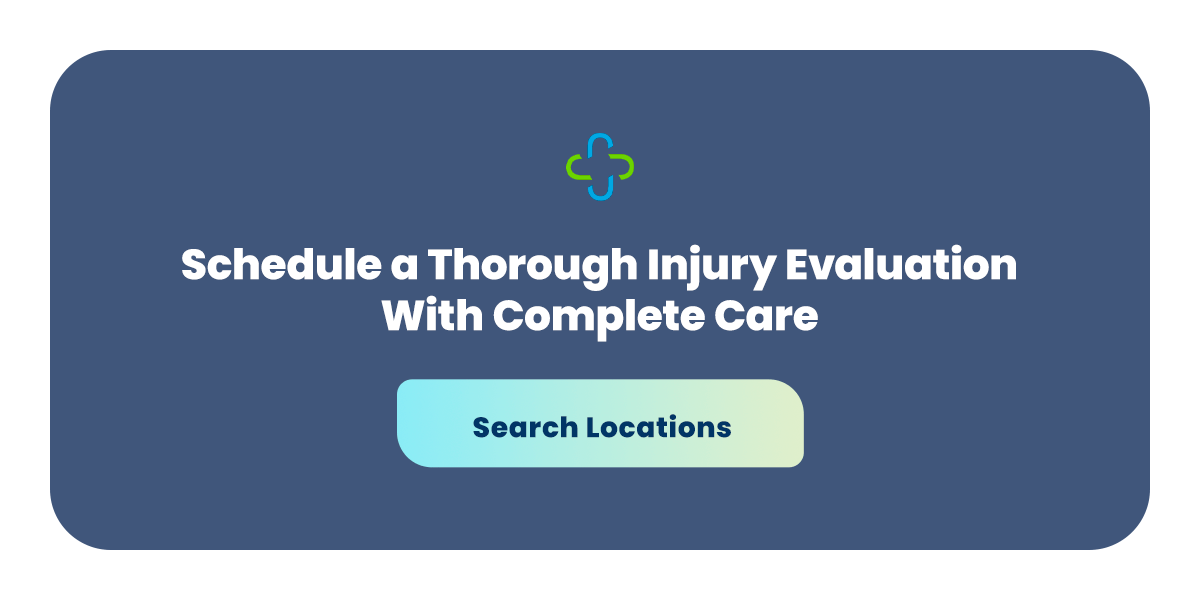Sudden falls may seem like nothing more than an embarrassing accident for some people. In these situations, people often want to recover quickly, jump up and continue their day or activities as normal. However, these incidents can result in several injuries, ranging in severity from mild to intense.
In the heat of the moment, your adrenaline might mask an injury, creating a false sense of security. However, symptoms can develop over time, and it’s essential to address injuries promptly. Learn more about slip-and-fall injuries and symptoms, including what to look for and when to seek medical attention.
A slip-and-fall incident is any situation that results in an injury from slipping and falling down. Typically, this term refers to personal incidents at the fault of another person or entity, such as a business, but you can also experience a slip and fall at your own home and other locations.
Common causes of slip-and-fall accidents are uneven and wet surfaces, poor weather conditions, employee neglect within nursing homes, footwear and improper training in the workplace. Falling is the second leading cause of death due to unintentional injuries, making it essential to know what to do after a fall to ensure your health and safety.
Injuries from slipping and falling vary from person to person. Your experience may differ from someone else’s based on your environment, the cause of the accident and personal factors like weight, preexisting medical conditions, bone mass and age. An injury from falling could include:
Sometimes, it can be challenging to determine a problem after a slip-and-fall incident. You may feel relatively fine overall but experience symptoms that are cause for concern. Even worse, you might not see visible signs of an accident right after it happens but experience symptoms a few days or even weeks later. Watch out for these symptoms:
Ultimately, you know what your body needs and when something feels wrong. If you recently experienced a slip-and-fall accident and feel that something isn’t right, you may have an injury.
Feeling sore after a fall is often due to soft tissue damage. These injuries are impossible to identify without equipment because they occur under the skin. Soft tissue injuries can be very serious and painful, so it’s essential to seek medical attention for proper treatment. These injuries can occur on internal organs and other non-bone parts of the body, including ligaments, tendons and muscles.
When you experience an injury, your body often goes into a shock-like state due to increased stress. This stress prompts your body to release adrenaline, helping you focus on the situation and remove yourself from danger. Adrenaline protects you when you feel heightened emotions, shielding your body from harm. However, this can make it challenging or even impossible to determine the extent of your injuries or if you have any at all.
Over time, your adrenaline levels will decrease, and your brain will start picking up on pain signals. At this point, your injuries become more noticeable, either by feeling them or seeing them on your body. Delayed symptoms can take days or weeks to appear after a slip-and-fall accident. This highlights the importance of seeking medical attention immediately after an accident, even if you don’t see anything wrong upon first inspection.

Accidents can happen anywhere, anytime. Regardless of the accident’s cause or your situation, you should take several actions if you experience a slip-and-fall incident. Follow these steps:
Whether your accident occurs at home or in a public location, you should take time to inspect the area and address any problems that could have contributed to your accident. In some cases, this may mean picking up objects around your home or addressing a hardly noticeable spill. In other cases, problems may need more significant attention.
For example, a foundation may have cracks, a stair may be broken or a hole may be hard to see. Addressing the cause can prevent you and others from falling in the future.
Many slip-and-fall symptoms can take a while to appear, so you may not know for sure whether you’ve sustained an injury unless you seek medical attention. When you’re certain it’s safe to move around, it’s important to get medical help.
If you feel like you can’t move or get help on your own, ask for assistance from those around you or use a mobile device to make an emergency call. Either way, take things slow and only perform the bare minimum actions until you can receive a professional evaluation.
If your fall occurs in a public space or at a business, you should take the proper steps to document the accident and report the cause to the necessary people. Notifying workers or those responsible for the area’s care can help reduce the chances that someone else slips and falls from the same hazard. Additionally, if you decide to take legal action for the incident, your documentation can support your case.
At Complete Care, we use a multidisciplinary approach to give patients access to health care providers who focus on evaluating, treating and managing injuries. If you need pain or injury relief from a slip and fall, we encourage you to connect with our team.
We know it can be challenging to find the right care after an accident, but our team helps patients navigate recovery with confidence and quality treatment. Find your nearest location for pain relief in Florida.

The information provided on this website does not, and is not intended to, constitute legal advice; instead, all information, content, and materials available on this site are for general informational purposes only. Information on this website may not constitute the most up-to-date legal or other information. This website contains links to other third-party websites. Such links are only for the convenience of the reader, user or browser.